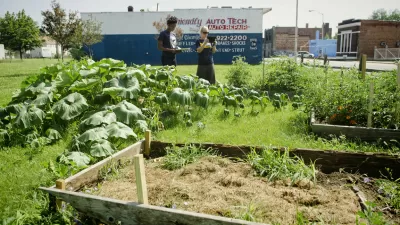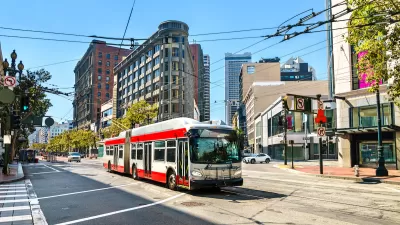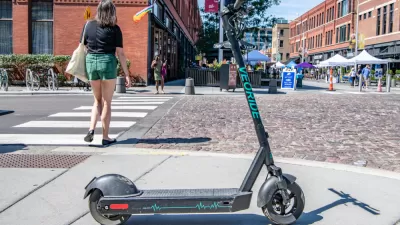Learn about nonprofits' pivotal role in urban sustainability, from policy advocacy to launching eco-initiatives that are transforming cityscapes for the better.

Urban planners have a role in creating more sustainable cities by partnering with local organizations. People may struggle to find affordable ways to start new projects and increase green space in lower-income communities. Fortunately, nonprofits have the infrastructure and resources to begin making changes. They can also partner with bigger corporations for the funding needed to add parks, community gardens and other improvements.
1. Implement green infrastructure
As the world shifts to a renewable energy model, adding green infrastructure to current methods requires funding and careful planning. Natural areas recede as urban sprawl grows. Figuring out how to coexist with nature is challenging.
Fortunately, nonprofits such as The Nature Conservancy are teaming up with big corporations to collect recommendations on the best way to implement a hybrid system. Some of the companies involved in a 2023 meeting included The Dow Chemical Co., Swiss Re, Unilever and Shell. Much of the focus is on protecting natural resources and using them in smarter ways.
2. Engage the community
Nonprofits can build awareness through training, workshops and boot camps. Urban planners can gain valuable insights from those who live and work in the community. Will a new solar farm cause a neighborhood to lose a valuable park families enjoy? The more informed people are, and the more nonprofits work alongside them, the better sustainable features are for everyone.
EchoingGreen and Barclays partnered to put on a Social Innovation Challenge & Bootcamp where the bank got exposure, the nonprofit found projects to support, and the community turned out for information and to provide input. They discussed how the pandemic revealed issues in urban development and sought solutions. Everyone benefits when people work together to create a more sustainable future.
3. Donate land
Nonprofits can also utilize city land to offer community gardens. They focus on organic fruits and vegetables and overcoming food deserts for those in poverty. Companies and individuals can team up with the neighborhood by offering the use of vacant lots or giving access to flat rooftops.
Small-business owners and nonprofits can easily start a garden without much red tape. Cass County Community Garden started when Aly Irvin offered space outside her business for community use.
Urban food deserts create several issues that community gardens can solve. People can stay in the area to get fresh produce, reducing carbon emissions. Plants add oxygen to the air and reduce carbon. Organic gardening methods reduce chemical pollutants that can leach into soil and streams.
4. Support alternative transportation
Electric vehicles (EVs) are more efficient, utilizing up to 91 percent of energy to propel forward than a combustion engine's 25% or less. It’s easy to see why EVs are a more sustainable option in urban settings.
People might be willing to drive EVs, but if available charging stations are scarce, it could be next to impossible for most people. Nonprofit organizations can encourage city planners to support alternative transportation such as buses, riding bikes or carpooling.
Companies can also support more charging stations to encourage EVs for citizens and public transportation. Electrify America and IKEA committed to adding charging stations to 25 of the brand's retail locations.
5. Build around transportation centers
Access to public transportation makes cities more sustainable, reduces carbon emissions and helps underprivileged communities expand opportunities. HUD, DOT and the EPA have a sustainable communities program that works to award funding for development utilizing grants. Preparing for possible climate change is part of the equation.
One example of a nonprofit working alongside government organizations to improve conditions is Kansas City's Mid-America Regional Council. It’s working on a blueprint for the public transportation system through 2050. Council members worked with city leaders to prioritize 425 projects submitted by 39 local government agencies.
Working alongside nonprofits for maximum impact
Cities have a certain personality and beat. Urban planners must work alongside organizations that have a close connection with citizens to incorporate sustainability measures without changing the fabric of city living. Adding amenities and public services makes living in town more attractive. Focusing on what to change and how it benefits people and the environment ensures a greener future for urban areas.

Study: Maui’s Plan to Convert Vacation Rentals to Long-Term Housing Could Cause Nearly $1 Billion Economic Loss
The plan would reduce visitor accommodation by 25,% resulting in 1,900 jobs lost.

North Texas Transit Leaders Tout Benefits of TOD for Growing Region
At a summit focused on transit-oriented development, policymakers discussed how North Texas’ expanded light rail system can serve as a tool for economic growth.

Why Should We Subsidize Public Transportation?
Many public transit agencies face financial stress due to rising costs, declining fare revenue, and declining subsidies. Transit advocates must provide a strong business case for increasing public transit funding.

How to Make US Trains Faster
Changes to boarding platforms and a switch to electric trains could improve U.S. passenger rail service without the added cost of high-speed rail.

Columbia’s Revitalized ‘Loop’ Is a Hub for Local Entrepreneurs
A focus on small businesses is helping a commercial corridor in Columbia, Missouri thrive.

Invasive Insect Threatens Minnesota’s Ash Forests
The Emerald Ash Borer is a rapidly spreading invasive pest threatening Minnesota’s ash trees, and homeowners are encouraged to plant diverse replacement species, avoid moving ash firewood, and monitor for signs of infestation.
Urban Design for Planners 1: Software Tools
This six-course series explores essential urban design concepts using open source software and equips planners with the tools they need to participate fully in the urban design process.
Planning for Universal Design
Learn the tools for implementing Universal Design in planning regulations.
Ascent Environmental
Borough of Carlisle
Institute for Housing and Urban Development Studies (IHS)
City of Grandview
Harvard GSD Executive Education
Toledo-Lucas County Plan Commissions
Salt Lake City
NYU Wagner Graduate School of Public Service






























